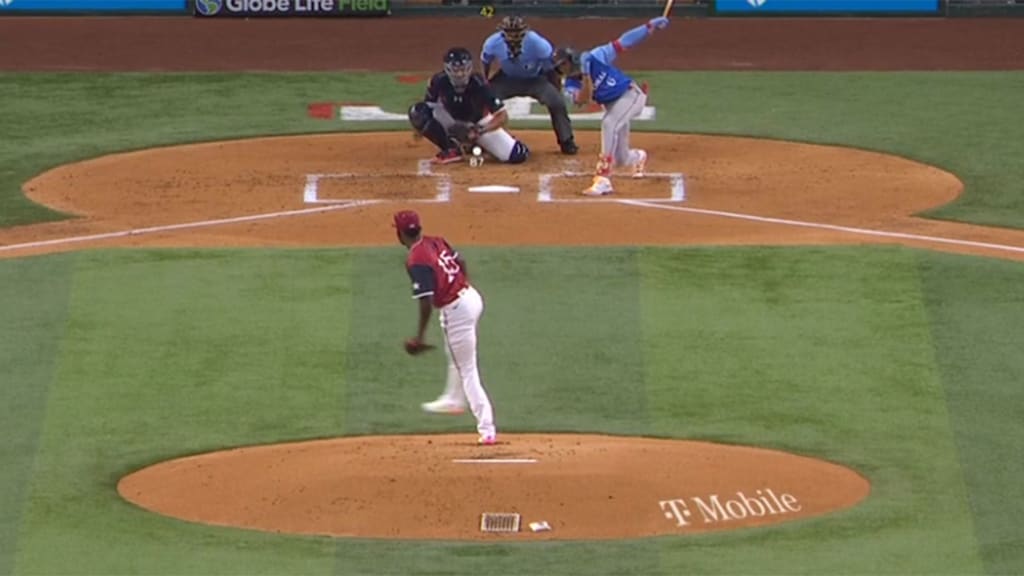ARLINGTON -- For the second straight year, the All-Star Futures Game served as an audition and demonstration of the automated ball-strike (ABS) challenge system, which has been under experimentation at the Triple-A level since 2022.
But viewers of MLB Network¡¯s coverage of Saturday¡¯s game at Globe Life Field also saw a noteworthy broadcast change that could potentially accompany ABS if it reaches the Major League level.
The strike-zone graphic typically included in baseball broadcasts was absent for the Futures Game. Though the dot depicting the location of the ball in relation to the plate remained, the box depicting the strike zone was gone.

For fans not familiar, the ABS system uses Hawk-Eye cameras to capture the location of each pitch, and the correct call is then relayed by T-Mobile¡¯s 5G Advanced Network Solutions. In the challenge system, human umpires still call balls and strikes, but teams have a limited number of balls and strikes they can ask to be reviewed in a given game.
More on the Futures Game
? Gameday
? Collier wins MVP
? Teodo makes history in start
? Top moments from the game
? How each team's prospect fared | Fun facts
? Futures Skills Showcase
? History | Complete coverage
There are two reasons why it might make sense for broadcasts of games featuring the challenge system to not include the strike-zone graphic:
1. Cheating concerns associated with ABS. Though sign-stealing rules prevent dugouts from having a live feed of games, live feeds are available in so many other places in the ballpark that there could be concern of a team having a system to relay to the players whether or not to challenge a ball/strike call.
2. The home viewer¡¯s entertainment experience. If a reasonable approximation of the automated strike zone is available to viewers and a player issues a challenge, the viewer will already know the correct call prior to the system¡¯s review. The fun of the challenge system is that anxious moment (and if you¡¯ve witnessed the ABS challenge system, you know it¡¯s only a moment) between when the player asks for the challenge and the system¡¯s conclusion is shown on the scoreboard and broadcast.
Life with ABS, therefore, could lead to a new way in which the game is broadcast for television. For those pining for a means of ensuring the biggest calls are made without the possibility of human error, that¡¯s likely a worthwhile trade.
We don¡¯t know when or if MLB will implement ABS, but it has become clear that the league has narrowed its experimental focus to the challenge system, as opposed to the so-called ¡°full ABS¡± games in which every ball and strike call was made by the Hawk-Eye camera system.
More from MLB Pipeline:
? Top 100 prospects | Stats | Video | Podcast | Complete coverage
The Triple-A season began with half the games featuring full ABS and half featuring the challenge system. But on June 25, full ABS went by the wayside and all games became challenge-system games. In a memo to teams, MLB cited survey research in which 61% of staff and players preferred the challenge system, while only 11% preferred full ABS (28% favored the traditional umpire-called format). Fans surveyed preferred challenge to full ABS by a 2:1 ratio.
MLB is experimenting with multiple iterations of the challenge system. In the Pacific Coast League, each team begins the game with three challenges (with successful challenges retained). But in the International League, the available challenges were reduced to two per team (also with successful challenges retained) in an effort to reduce the frequency of high-challenge games. Of the fans surveyed, 89% said the optimal number of challenges per game was six or fewer (53% said three to four was ideal), but nearly 40% of Triple-A games in the first half of the season had featured more than six.
League officials have said that ABS will not be introduced at the big league level until or unless every question and concern about the technology has been addressed, as was the case with the pitch clock. For that reason, the Triple-A testing continues.
But for one day, on the Futures Game stage, the automated ball-strike system was shown to a wider audience. And the accompanying broadcast tweak might be a clue to what an ABS future holds.
